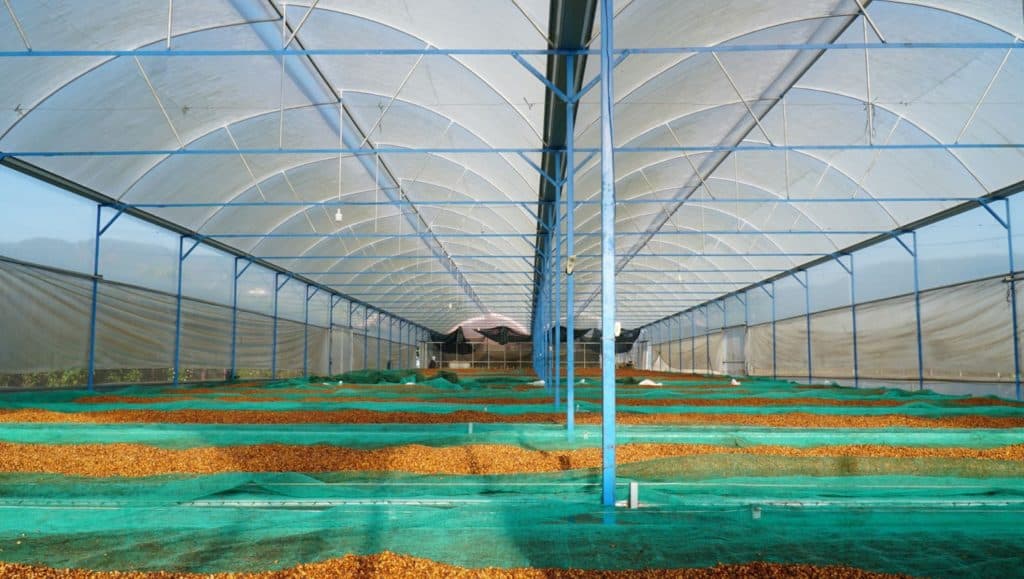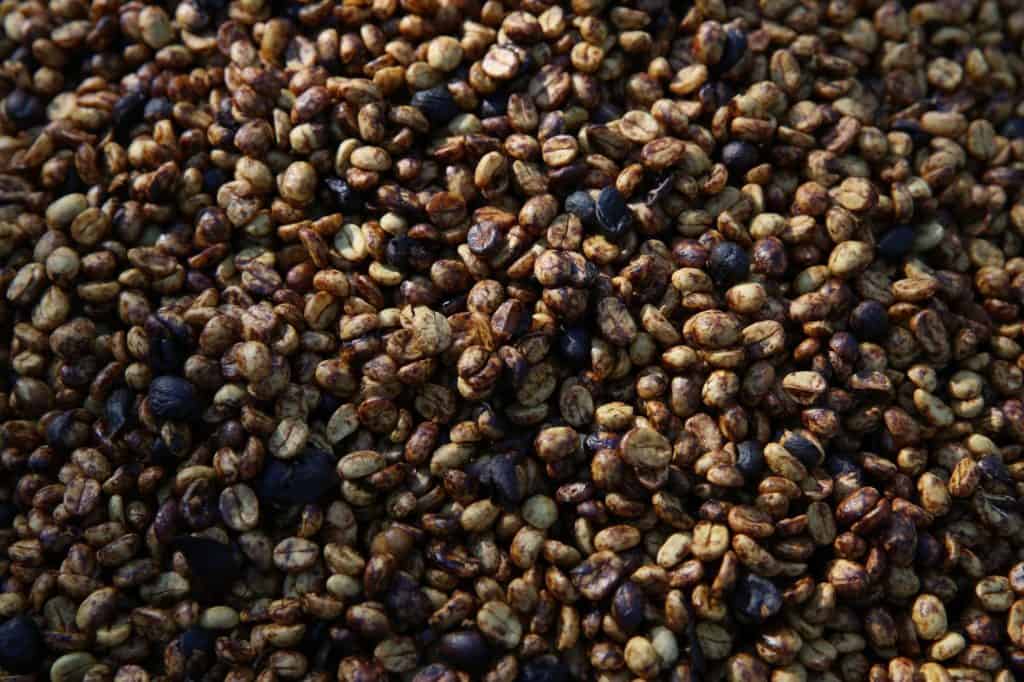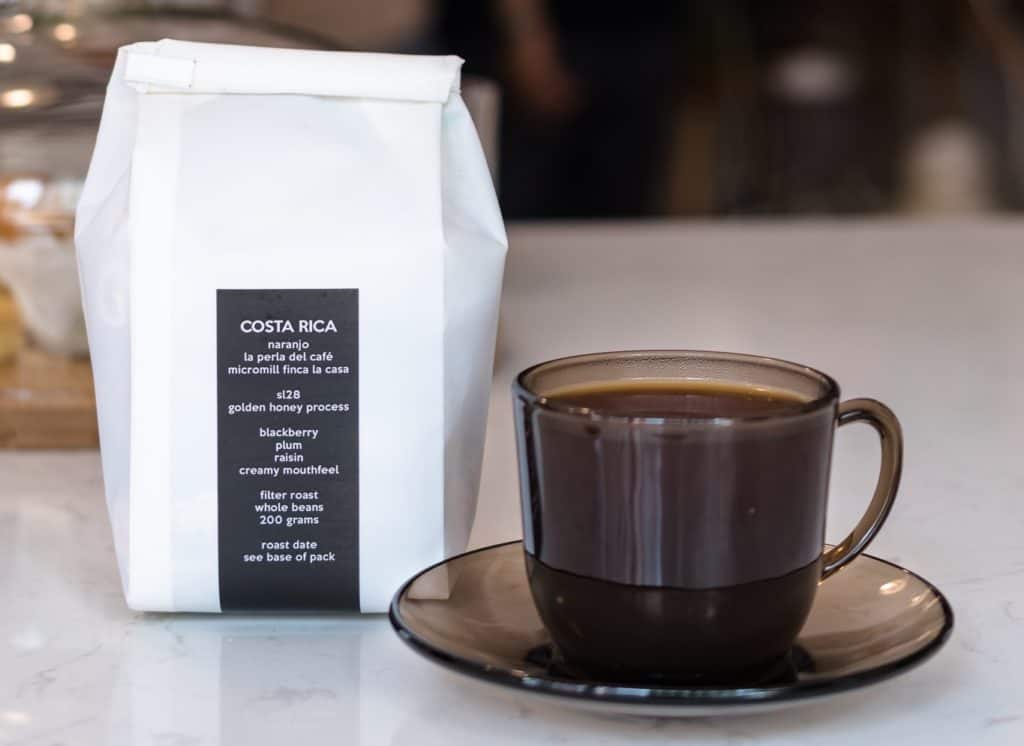Coffee is one of the most popular drinks in the world. Millions of people drink coffee daily, and there are many ways to process the beans. In order to create new experiences, flavors and aromas, the industry has developed several methods associated with specialty coffee, and one of the newer methods is called honey processing.
If you’re a coffee lover, you might have heard of honey-processed coffee. But what exactly is it? In this article, we’ll take a closer look at the honey processing method and how it affects the taste of your coffee.
What Is The Honey Processing Method?
The honey processing method is similar to the natural method but has one key difference. The honey processing method is a type of coffee processing that is somewhere between natural (the beans are dried with the fruit still on) and washed (the fruit is stripped, and the beans are soaked and washed) processing.
For the coffee to be considered honey processed, the cherry shall be removed from the bean, but the mucílago, a sticky substance covering the bean mostly comprised of sugar, should stay on during the drying process. When dried, the mucilage changes to a color similar to the honey and sticks several beans together.
With honey processing, the coffee cherry is removed from the bean, but the mucilage (the sticky substance surrounding the bean) is left on. The beans are then dried with the mucilage (which resembles honey) still on them.
The amount of mucilage removed and the time the beans are dried can vary from one farmer to the other, giving honey-processed coffee its unique taste.
An Environmental Friendly Processing Method
The honey processing method was developed in Costa Rica in the 1970s as a way to process coffee beans without using water. This method is now used in coffee-producing countries all over the world.

The honey processing method is more environmentally friendly compared to the washed method.
There is no need to use large amounts of water to remove the mucilage from the coffee beans. This method is also less labor intensive than the natural processing method, as only the cherry needs to be removed before processing.
Honey Processed Coffee vs. Other Processes
There are three primary ways to process coffee: washed, natural (or dry), and honey.
The washed process is by far the most common, accounting for about 70% of all coffee produced worldwide. It’s also the cleanest and most consistent in terms of quality and flavor.
The natural process is the oldest and simplest way to process coffee, and it’s still used for about 20% of the world’s coffee. The coffee cherries are dried in the sun or mechanical dryers, and the beans are hulled and sorted.

The honey process, also known as the pulped natural process, is a hybrid of the washed and natural processes.
In the honey process, the coffee cherries are first pulped to remove the skin and fruit, but the coffee bean itself is not washed. After de-pulping, the coffee beans are dried as usual.
The mucilage on the coffee bean is what makes it easier to tell the difference between honey-processed coffee and other processed coffees.
The washed process removes most or all of the mucilage, while the natural process leaves all of it intact along with the fruit. The honey process falls somewhere in between, leaving mucilage on the coffee bean but not on the fruit.
The different processing methods have a significant impact on the final flavor of the coffee. Washed coffees tend to be clean and bright, with acidity being the dominant flavor characteristic.
Natural coffees are typically more fruity and sweet, with less acidity.
Honey-processed coffees often exhibit both fruity and floral flavors.
You probably wonder what differences there might be between various coffee types and honey-processed. Well, honey-processed coffee has a few key differences:
- Honey-processed coffee is sweeter than other coffee types—the mucilage sugars are not removed during the processing.
- Honey-processed coffee has more body than other types of coffee—the mucilage adds weight and texture to the coffee.
- Honey-processed coffee has more of a fruity flavor than other types of coffee—the mucilage contains fruit acids.
What Does Honey Processed Coffee Taste Like?
Honey-processed coffee typically has a sweeter taste. The remaining mucilage on the beans contains sugars that are released during the roasting process.

Honey-processed coffee often tastes fruitier than other coffees since the mucilage can contain fruit acids. The final taste of honey-processed coffee also depends on how much mucilage is left on the beans and how long they are roasted.
If most of the mucilage is removed, the coffee will be less sweet with fruitier flavors. If only some mucilage is removed, the coffee will be sweeter with chocolate and caramel flavors.
If you want to try it out, we recommend Barbosa Coffee from Costa Rica if you want premium. If you want to go affordable, you can try Z Beans from Ecuador.
How To Brew Honey Processed Coffee
The great thing about honey-processed coffee is that it can be brewed using any method you like. Whether you prefer drip coffee, espresso, or cold brew, honey-processed coffee is robust and filled with enough flavor that the characteristics will show through despite the method used.

If you want to try brewing honey-processed coffee at home, you should keep a few things in mind.
First of all, because honey-processed coffee has a lower pH level than other types of coffee, it can be more difficult to extract.
This means that you might need to experiment with your brewing method and grind size to find the perfect balance—running the water through the coffee slowly to extract the flavors.
Honey-processed coffee can have a higher sugar content than other types of coffee—it can be more susceptible to over-extraction, so be careful not to brew for too long.
Finally, because honey-processed coffee is relatively new (it has been around for a long time, but not widely used until now), there is still a lot to learn about it.
If you’re interested in trying it, be sure to do some research and experiment with different brewing methods to find the perfect cup of honey-processed coffee for your taste.
Some Tips to Make the Perfect Cup of Honey Processed Coffee
Here are some tips to help you make the perfect cup.
- If you use a drip coffee maker, use a slightly coarser grind than you would for regular coffee. It will help prevent the coffee from becoming over-extracted.
- When brewing espresso, pay close attention to your shot time. Honey-processed coffee can be a bit more volatile than other types of coffee.
- When brewing espresso, use a slightly higher dose of coffee than you would for a regular espresso. This will help balance out the sweetness of the honey-processed coffee.
- If you’re making cold brew, use twice as much coffee as you would for a hot brew. This will ensure that the coffee is not too diluted.
Final Thoughts
Brewing honey-processed coffee is easy; once you’ve tried it, you’ll be hooked! This unique type of coffee has a delicious sweetness unlike any other. So, give honey-processed coffee a try next time you’re in the mood for something different. You might just fall in love with its sweet and fruity taste.
